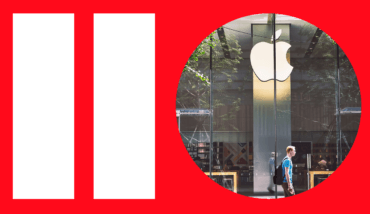Nielsen have just conducted their latest Global Multi-Screen Survey (dual-screening to some) and confirmed something of the obvious: we’re screen mad. We want screens, and wherever possible, even more screens.
We also want content to make those screens worthy of owning. We can’t get enough of video, be it TV, online video at home, or video content on the move. Back in issue 0020 we celebrated viral content. Indeed, M+C Saatchi London is just weeks away from its next ‘hack’ event. Expect film content. Watch this space.
Elsewhere, globally a massive 28% of us are watching video on our mobile phones at least once a day. In some markets, home computers have been leapfrogged altogether. And smartphone ownership is expected to take another massive leap in the next 12 months as cheaper devices proliferate.
Tablet ownership is up to 12% of the online global audience, and again, appetite is huge: if all who say they intend to purchase a tablet in the next 12 months do so, tablet ownership would surge to 30%. Incredible demand.
Multi-screening behaviours are growing too: we can Shazam TV ads – see this Thinkbox ad run in the UK [watch] – and TiVo, the company who first enabled consumers to fwd through ad breaks, are now hooking up with PayPal in the US to encourage immediate purchases from adverts using just the remote control & a smartphone.
There have been myriad of apps aimed at multi-screen behaviour; Heineken’s Star Player app and X-Factor’s Clap app are super examples. And we’ve written about the platforms devoted to socialising and leveraging TV content on smartphones and tablets: for example Zeebox.
But major manufacturers don’t want it to end there. Linking these screens together to augment our experiences is something that’s become known as the The Final Frontier: the living room. It holds some interesting keys.
Substantial efforts are well underway. Microsoft, with their XBox technologies, are arguably the first to give a real glimpse into what that seamless future looks like. It’s impressive.
It’s called SmartGlass, and it aligns Gaming, Music, TV and Internet across multiple devices. SmartGlass revolves around users’ ownership of an Xbox, but seeks then to synchronise any other screens the user owns, including another manufacturer’s products. Users will be able to take control through different screens, and receive aligned content. This, added to Kinect’s motion and voice controls, makes for a very compelling, unified proposition. [Watch].
Microsoft say that they will also offer 30m music tracks. While details are scant, it is suggested this may position them as rivals for Spotify. And SmartGlass effectively turns any TV into a Smart TV. Most compelling, it will allow the smartphone or tablet to control the web (Internet Explorer) on the larger screen – something no manufacturer has yet mastered.
(That could prove to be a welcome boost for Microsoft’s beleaguered browser, after an astonishing announcement by one Australian retailer that will tax purchases made on its website for those using Internet Explorer 7, such were the aggravations associated with supporting it. Not great PR.)
Whether Microsoft are able to become kings of the multiscreen world remains to be seen. As ever, Apple’s proposition, when it arrives, will be definitive.
So while the battle for hardware control begins in earnest, and our appetite remains ferocious, it is very clear that the creative armoury becoming available to brands will be formidable – and that will help brands deliver what people really want: great content.

